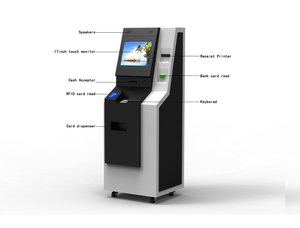Introduction to ATM Automated Teller Machines
Automated Teller Machines (ATMs) have revolutionized the way we handle banking transactions. These self-service kiosks allow users to perform a variety of financial activities without the need for a bank teller. From withdrawing cash to checking account balances, ATMs provide a convenient solution for managing finances on the go. With advancements in technology, modern ATMs are equipped with features that enhance security, usability, and accessibility.
Types of ATM Automated Teller Machines
There are several types of ATM Automated Teller Machines, each designed to cater to diverse banking needs:
- Cash Dispensers: Primarily used for withdrawing cash.
- Deposit ATMs: Allow users to deposit cash or checks directly into their bank accounts.
- Multifunction ATMs: Offer a range of services, including cash withdrawal, deposits, transfers, and bill payments.
- Offsite ATMs: Located away from bank branches, often found at retail locations or convenience stores.
- Drive-up ATMs: Designed for users to access services from their vehicles, enhancing convenience.
Function, Features, and Design of ATM Automated Teller Machines
The functionality and design of ATM Automated Teller Machines are integral to user satisfaction and efficiency. Key features include:
- User Interface: Equipped with graphical user interfaces that guide users through transactions intuitively.
- Security Features: Features like encryption, biometric scanners, and anti-skimming technology to protect user information.
- Accessibility: Compliance with ADA guidelines to ensure usability for individuals with disabilities.
- Cash Management: Advanced cash recycling systems that manage cash supply efficiently and reduce operational costs.
- Remote Monitoring: Enables financial institutions to monitor ATM performance in real-time, ensuring uptime and security.
Applications of ATM Automated Teller Machines
ATM Automated Teller Machines serve diverse markets and applications, making them essential in modern banking. Their applications include:
- Personal Banking: Allowing individuals to access their bank accounts anytime and anywhere, improving financial management.
- Retail Transactions: Providing cash access in retail locations, enhancing customer convenience.
- International Banking: ATMs offer foreign exchange services by enabling international card users to withdraw cash in local currencies.
- Crisis Management: In times of banking disruptions, ATMs provide lifelines for cash access to the public.
- Financial Outreach: Expanding banking services in rural or underserved areas, promoting financial inclusion.
Advantages of ATM Automated Teller Machines
Investing in ATM Automated Teller Machines comes with several advantages:
- Convenience: Customers enjoy the flexibility to conduct transactions outside banking hours, reducing wait times.
- Cost-Effective: Reduces the need for full-service bank branches, keeping operational costs low.
- Increased Customer Satisfaction: Enhances banking experience by providing faster service and reducing congestion at branches.
- Revenue Generation: Banks can earn fees from non-customers who use their ATMs, boosting income streams.
- Data Insights: Banks can analyze transaction data to identify customer preferences and improve services.













































































































































































































